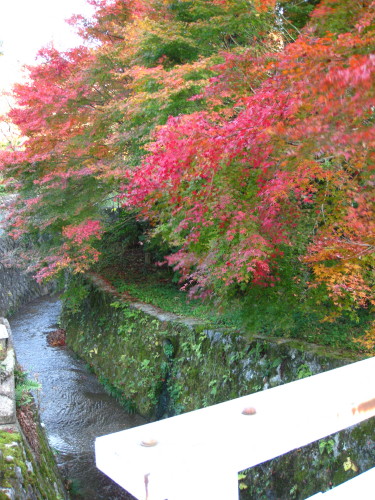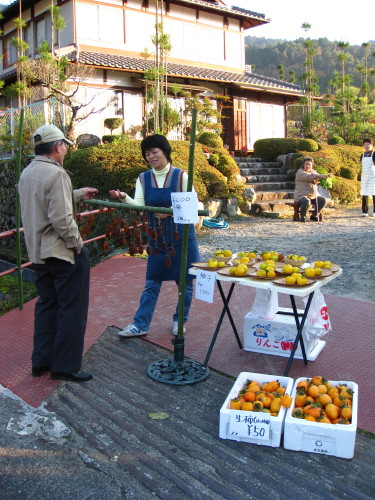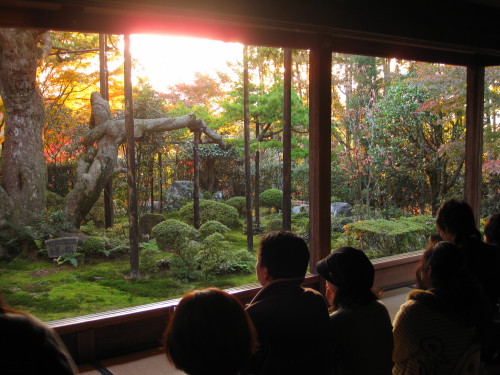Inoue-san, who has been our genial host and chauffeur all day, finds a parking spot in an open area and leads us into a local neighbourhood. A shortcut he says. We walk along a pleasant stream, up a short slope, stop to purchase and enjoy dried persimmons along the way.
After a few minutes we arrive at Hosen-in Temple. It’s billed as “an understated beauty away from the tourist crowds.” Strictly speaking, that’s true; however, today it’s quite literally jammed wall-to-wall with Japanese. I’m the only silvery blonde in the place.
There’s a huge crush to get into the tea room. Tea is free with admission. Perhaps that’s the draw. Ordinarily, I’d by-pass the crowd and focus on some less congested corner or sit apart to watch the throng surge like a river to the popular spots. However, today Kyoko and I are in Inoue’s charge. He hands us our tea tickets and we queue with the crowd.
The garden is renowned for its 700 year-old pine which we are about to view once we get inside. However, avoiding the unpleasant, Inoue-san neglects to mention the blood-stained ceiling built from the floorboards of Fushimi Castle. The ceiling honours the lives of the samurai who committed mass suicide there after their defeat in a late 16th century battle.
Throughout the day it has been apparent that Inoue has masterfully thought of everything. Now it’s clear he has timed our arrival to this moment: The setting sun streams through the branches of the pine.
We inch forward. Finally we arrive in the front row where we receive a bowl of matcha (ceremonial tea) and plate of wagashi (bean paste confection).
The art of matchless garden design and ancient pine framed by the temple pillars somehow suspends time. Even though hundreds still cue patiently behind us, the few minutes we have for our tea feel timeless.
Too bad I didn’t know about the ceiling until after. I would have appreciated the crimson dissonance.




